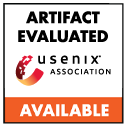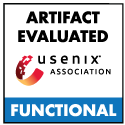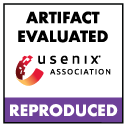Yi Zeng, Virginia Tech and SONY AI; Minzhou Pan, Himanshu Jahagirdar, and Ming Jin, Virginia Tech; Lingjuan Lyu, SONY AI; Ruoxi Jia, Virginia Tech
External data sources are increasingly being used to train machine learning (ML) models as the data demand increases. However, the integration of external data into training poses data poisoning risks, where malicious providers manipulate their data to compromise the utility or integrity of the model. Most data poisoning defenses assume access to a set of clean data (referred to as the base set), which could be obtained through trusted sources. But it also becomes common that entire data sources for an ML task are untrusted (e.g., Internet data). In this case, one needs to identify a subset within a contaminated dataset as the base set to support these defenses.
This paper starts by examining the performance of defenses when poisoned samples are mistakenly mixed into the base set. We analyze five representative defenses that use base sets and find that their performance deteriorates dramatically with less than 1% poisoned points in the base set. These findings suggest that sifting out a base set with \emph{high precision} is key to these defenses' performance. Motivated by these observations, we study how precise existing automated tools and human inspection are at identifying clean data in the presence of data poisoning. Unfortunately, neither effort achieves the precision needed that enables effective defenses. Worse yet, many of the outcomes of these methods are worse than random selection.
In addition to uncovering the challenge, we take a step further and propose a practical countermeasure, Meta-Sift. Our method is based on the insight that existing poisoning attacks shift data distributions, resulting in high prediction loss when training on the clean portion of a poisoned dataset and testing on the corrupted portion. Leveraging the insight, we formulate a bilevel optimization to identify clean data and further introduce a suite of techniques to improve the efficiency and precision of the identification. Our evaluation shows that Meta-Sift can sift a clean base set with 100\% precision under a wide range of poisoning threats. The selected base set is large enough to give rise to successful defense when plugged into the existing defense techniques.
Open Access Media
USENIX is committed to Open Access to the research presented at our events. Papers and proceedings are freely available to everyone once the event begins. Any video, audio, and/or slides that are posted after the event are also free and open to everyone. Support USENIX and our commitment to Open Access.
author = {Yi Zeng and Minzhou Pan and Himanshu Jahagirdar and Ming Jin and Lingjuan Lyu and Ruoxi Jia},
title = {{Meta-Sift}: How to Sift Out a Clean Subset in the Presence of Data Poisoning?},
booktitle = {32nd USENIX Security Symposium (USENIX Security 23)},
year = {2023},
isbn = {978-1-939133-37-3},
address = {Anaheim, CA},
pages = {1667--1684},
url = {https://www.usenix.org/conference/usenixsecurity23/presentation/zeng},
publisher = {USENIX Association},
month = aug
}


